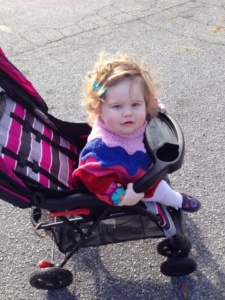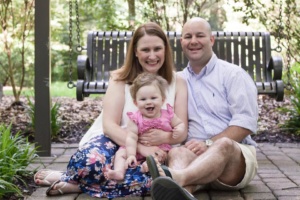Liver Transplantation for Propionic Acidemia:
Part 1 - Réponses aux questions que les familles peuvent avoir,,en,James Squires,,en,Squires est spécialiste des maladies du foie au Children's Hospital de Pittsburgh de l'UPMC et professeur adjoint de pédiatrie à l'école de médecine de l'Université de Pittsburgh,,en,Jodie M,,en,vent,,it,MGC,,tl,LCGC,,en,Jodie Vento est conseillère en génétique et gestionnaire du Centre de traitement des maladies rares à l'Hôpital pour enfants de Pittsburgh de l'UPMC,,en,Que pouvons-nous espérer qu'une greffe de foie puisse faire pour notre enfant?,,en,Basé sur l'expérience à ce jour avec des greffes de foie chez les enfants atteints d'acidémie propionique,,en,on peut dire qu'après une greffe de foie,,en,les enfants sont susceptibles d'avoir une qualité de vie sensiblement meilleure et une réduction spectaculaire des crises métaboliques,,en,Il est important que les familles comprennent,,en,cette transplantation du foie est,,en,ne pas,,en
James Squires, MD, MS

Dr. James Squires
Dr. Squires is a liver disease specialist at Children’s Hospital of Pittsburgh of UPMC and an assistant professor of pediatrics at the University of Pittsburgh School of Medicine.
Jodie M. Vento, MGC, LCGC
Jodie Vento is a genetic counselor and manager of the Center for Rare Disease Therapy at the Children’s Hospital of Pittsburgh of UPMC.
What can we expect that a liver transplant could do for our child?
Based on experience to date with liver transplants in children with Propionic Acidemia (Pennsylvanie),we can say that after a liver transplant,children are likely to have a substantially better quality of life and a dramatic reduction in metabolic crises. It’s important for families to understand, cependant, that liver transplantation is not un remède pour PA,,en,C'est parce que la déficience en enzyme qui cause l'AP existe dans tout le corps,,en,pas seulement dans le foie,,en,La greffe du foie sert de ce que les spécialistes du foie appellent un,,en,remplacement d'enzyme en vrac,,en,fournir suffisamment d'enzymes fonctionnelles pour minimiser - voire éliminer - les crises métaboliques,,en,qui sont les complications les plus graves de l'AP pour les enfants affectés ainsi que l'une des caractéristiques les plus effrayantes de la maladie pour les familles,,en,Parce que des complications liées à l'AP peuvent toujours se produire après une greffe,,en,Votre enfant aura toujours besoin de soins de suivi auprès d'un ou de plusieurs médecins spécialistes.,,en,Y a-t-il un minimum ou le «meilleur» âge pour un enfant atteint d'AP pour avoir une greffe de foie?,,en,Il n'y a pas de minimum ou de «meilleur» âge,,en,Dans notre centre,,en. This is because the enzyme deficiency that causes PA exists throughout the body, not just in the liver.
The liver transplant serves as what we liver specialists call a bulk enzyme replacement, providing enough functional enzyme to minimize – if not eliminate –metabolic crises, which are the most severe complications of PA for affected children as well as one of the most frightening features of the disease for families.
Because complications related to PA may still occur following a transplant, there will be a continued need for your child to get follow-up care with one or more medical specialists.
Is there a minimum or “best” age for a child with PA to have a liver transplant?
There is no minimum or “best” age. At our center, l'âge moyen d'une transplantation hépatique chez un enfant atteint d'AP est d'environ sept ans,,en,mais nous avons effectué des greffes chez des enfants aussi jeunes qu'un an,,en,Le meilleur moment pour envisager une greffe du foie est alors que les symptômes de l'AP sont encore raisonnablement bien contrôlés,,en,Il n'y a pas non plus d'âge minimum pour subir une évaluation avant la transplantation ou être placé sur la liste d'attente de la transplantation,,en,Que devrions-nous prendre en compte lorsque nous décidons où prendre notre enfant pour une évaluation de la greffe du foie,,en,Le facteur le plus important à considérer est l'expérience de l'équipe chirurgicale qui effectue des greffes de foie chez des patients atteints d'AP et d'autres maladies métaboliques.,,en,Ces patients ont des besoins complexes qui sont différents de ceux des patients recevant des greffes de foie pour d'autres conditions,,en, but we have performed transplants in children as young as one year old.
The best time to consider a liver transplant is while the symptoms of PA are still reasonably well controlled. There is also no minimum age for undergoing a pre-transplant evaluation or being placed on the transplant waiting list.
What should we consider when deciding where to take our child for a liver transplant evaluation?
The most important factor to consider is the experience of the surgical team performing liver transplants in patients with PA and other metabolic diseases. These patients have complex needs that are different from those of patients receiving liver transplants for other conditions.
Le programme de transplantation hépatique pédiatrique à l'hôpital pour enfants de Pittsburgh de l'UPMC a été établi à,,en,par le chirurgien de transplantation de renommée mondiale Thomas E,,en,Starzl,,sk,Notre t Directeur de la transplantation pédiatrique,,en,George Mazariegos,,en,FACS,,fr,la transplantation du foie pionnier pour les enfants atteints de maladies métaboliques,,en,Depuis cette époque,,en,Hôpital pour enfants a effectué plus de,,en,greffes de foie pour les enfants atteints de maladie métabolique,,en,plus que tout autre centre de transplantation,,en,Nous avons également effectué plus de transplantations du foie chez les enfants que tout autre centre aux États-Unis et plus de transplantations de donneurs vivants que tout autre centre pédiatrique du pays,,en,Notre taux de survie à un an chez les patients transplantés hépatiques pédiatriques est,,en,dépassant la moyenne nationale,,en,selon le registre scientifique des receveurs de greffe,,en,Libération,,en 1981 by world-renowned transplant surgeon Thomas E. Starzl, MD, PhD. Our t Director of Pediatric Transplantation, George Mazariegos, MD, FACS, pioneered liver transplantation for children with metabolic diseases in 2004. Since that time, Children’s Hospital has performed more than 330 liver transplants for children with metabolic disease,more than any other transplant center.
We’ve also performed more liver transplants in children than any other center in the United States and more living-donor transplants than any other pediatric center in the country. Our one-year survival rate for pediatric liver transplant patients is 98%, exceeding the national average of 95%, according to the Scientific Registry of Transplant Recipients, Jan. 2018 release.
En plus de nos chirurgiens transplantés du foie de renommée mondiale et expérimentés,,en,notre Centre de traitement des maladies rares comprend des experts internationaux dans le diagnostic et le traitement de l'AP et d'autres maladies métaboliques,,en,Comment pourrions-nous commencer le processus d'évaluation de notre enfant pour une greffe de foie?,,en,Je peux vous dire comment le processus fonctionne ici à l'hôpital pour enfants de Pittsburgh de l'UPMC,,en,Cela commence par une recommandation de votre médecin ou de votre hôpital, nous demandant d'évaluer votre enfant,,en,Nous recevons également des auto-références directement des familles intéressées,,en,Nous demanderons au médecin ou à l'hôpital,,en,ou les deux,,en,pour nous envoyer tous les dossiers médicaux de votre enfant,,en,Nous examinerons attentivement les dossiers pour nous aider à comprendre les antécédents médicaux de votre enfant et la situation actuelle,,en, our Center for Rare Disease Therapy includes international experts in the diagnosis and treatment of PA and other metabolic diseases.
How would we start the process of having our child evaluated for a liver transplant?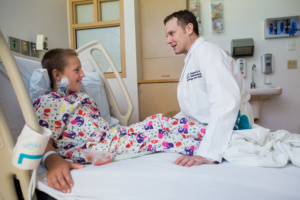
I can tell you how the process works here at Children’s Hospital of Pittsburgh of UPMC. It starts with a referral from your doctor or hospital requesting that we evaluate your child. We also receive self-referrals directly from interested families. We will ask the doctor or hospital, or both, to send us all of your child’s medical records.
We will look at the records carefully to help us understand your child’s medical history and current situation. Cette information aide notre équipe multidisciplinaire à élaborer un plan individualisé pour la visite d'évaluation de votre enfant,,en,si votre enfant a récemment subi certains tests de laboratoire ou d'imagerie,,en,nous ne répéterons pas ces tests à moins qu'il y ait une raison médicale valable de le faire,,en,Comprendre comment la maladie affecte votre enfant nous aide à identifier les spécialistes que votre enfant devrait voir pendant l'évaluation,,en,Il est important que les familles sachent que subir une évaluation avant la transplantation n'implique aucun engagement de part et d'autre,,en,Il ne garantit pas que votre enfant sera inscrit pour une greffe ou,,en,inversement,,en,toute exigence que vous devez accepter pour que votre enfant soit placé sur la liste d'attente de transplantation,,en,Nous pouvons répondre à des questions,,en,fournir des informations,,en,et faire des recommandations,,en,En fin de compte,,en. Par example, if your child has recently had certain laboratory or imaging tests done, we won’t repeat those tests unless there’s a valid medical reason for doing so. Understanding how the disease is affecting your child helps us identify which specialists your child should see during the evaluation.
It’s important for families to know that undergoing a pre-transplant evaluation involves no commitment on either side. It carries no guarantee that your child will be listed for a transplant or, conversely, any requirement that you must agree to have your child placed on the transplant waiting list. We can answer questions, provide information, and make recommendations. Ultimately, cependant, la décision de procéder à une greffe,,en,ou pas,,en,est un personnel pour chaque famille à faire,,en,L'évaluation est une occasion pour la famille et l'équipe de soins de se rencontrer et de se connaître,,en,ainsi que pour la famille de recueillir des informations et obtenir des réponses à toutes les questions que vous pourriez avoir,,en,Nous espérons que vous vous sentirez à l'aise de soulever des préoccupations,,en,N'hésitez pas à nous poser des questions sur tout problème qui vous préoccupe,,en,Il n'y a pas de questions stupides ou stupides,,en,si, après votre retour à la maison, vous pensez à quelque chose que vous auriez souhaité,,en,Appelez nous s'il vous plait,,en,Vous pouvez vous attendre à ce que l'évaluation soit deux,,en,ou un événement de trois jours,,en,Le personnel de notre Centre de traitement des maladies rares travaillera avec vous pour organiser pour vous,,en,votre enfant,,en, or not, is a personal one for each family to make.
The evaluation is an opportunity for the family and the health care team to meet and get to know each other, as well as for the family to gather information and get answers to any and all questions you may have. We hope you’ll feel comfortable raising any concerns. Please don’t hesitate to ask us about any issue that’s on your mind. There are no dumb or silly questions. And, of course, if after you’ve gone home you think of something that you wish you had asked, please give us a call.
You can expect that the evaluation will be a two- or three-day event. The staff of our Center for Rare Disease Therapy will work with you to arrange for you, your child, et d'autres membres de la famille à rester près de l'hôpital,,en,soit dans notre maison Ronald McDonald ou dans un hôtel voisin,,en,pendant que vous êtes ici pour l'évaluation,,en,Nous vous enverrons un horaire avant votre visite,,en,Cela vous indiquera quels spécialistes médicaux et chirurgicaux vous allez voir à quels moments et quels tests de laboratoire ou d'imagerie nous aimerions que votre enfant ait pendant l'évaluation,,en,Dans la mesure du possible,,en,nous essayons d'anticiper tous les tests dont nous aurons besoin pour que ce soit un processus relativement fluide pendant que vous êtes ici,,en,Merci de nous en dire plus sur ce à quoi nous pouvons nous attendre lors de l'évaluation de notre enfant,,en,Parce que l'AP est une maladie génétique,,en,les spécialistes que vous verrez comprendront probablement un généticien médical et un diététicien métabolique,,en, either at our Ronald McDonald house or at a nearby hotel, while you’re here for the evaluation.
We’ll send you a schedule in advance of your visit. This will tell you which medical and surgical specialists you’ll be seeing at what times and what laboratory or imaging tests we would like your child to have during the evaluation. To the extent possible, we try to anticipate all the testing we’ll need so that it’s a relatively smooth process while you’re here.
Please tell us more about what we can expect during our child’s evaluation.
Because PA is a genetic disease, the specialists you’ll see will likely include a medical geneticist and a metabolic dietician. Also, parce que l'AP cause souvent des problèmes cardiaques,,en,L'évaluation de votre enfant comprendra probablement des tests de base de la fonction cardiaque et une évaluation par un cardiologue,,en,Selon la façon dont la maladie affecte votre enfant,,en,l'évaluation peut également inclure des visites avec des spécialistes tels que,,en,Un neurologue,,en,évaluer la fonction cérébrale,,en,Un gastro-entérologue,,en,évaluer la fonction du pancréas,,en,Un hématologue,,en,évaluer la fonction de la moelle osseuse,,en,Bien que nous essayions d'anticiper tous les tests dont nous aurons besoin et de les planifier à l'avance,,en,parfois, nous pouvons décider qu'il serait utile de faire un test supplémentaire qui n'était pas initialement prévu,,en,en fonction des résultats des tests de base de la fonction cardiaque,,en, your child’s evaluation is likely to include basic heart function tests and an assessment by a cardiologist. Depending on how the disease is affecting your child, the evaluation may also include visits with specialists such as the following:
- A neurologist, to assess brain function
- A gastroenterologist, to assess pancreas function
- A hematologist, to assess bone marrow function
Although we try to anticipate all the testing we’ll need and schedule it in advance, sometimes we may decide that it would be helpful to do an additional test that wasn’t originally on the schedule. Par example, depending on the results of the basic heart function tests, le cardiologue pourrait vouloir faire un «test de stress» qui fournira des informations plus détaillées et des mesures relatives au fonctionnement du cœur de votre enfant,,en,Si nous décidons d'inscrire notre enfant pour une greffe,,en,quelles sont nos options pour obtenir un foie de donneur,,en,Combien de temps pouvons-nous attendre pour trouver un donneur compatible?,,en,L'AP est considérée comme une condition hautement prioritaire pour la transplantation hépatique,,en,le nom de votre enfant sera en haut de la liste d'attente,,en,parce que la demande de foie de donneur est élevée et que l'offre est limitée,,en,Je dis aux familles d'être prêtes à être sur la liste d'attente pendant plusieurs mois,,en,Avec n'importe quelle greffe du foie,,en.
If we decide to go ahead with listing our child for a transplant, what are our options for obtaining a donor liver? How long can we expect it to take to find a compatible donor?
PA is considered a high-priority condition for liver transplantation, so your child’s name will be near the top of the waiting list. Cependant, because demand for donor livers is high and supply is limited, I tell families to be prepared to be on the waiting list for several months.
With any liver transplant, Des tests minutieux doivent être effectués pour assurer la compatibilité du foie du donneur et du receveur de la greffe. De nombreux facteurs peuvent influencer le temps d'attente pour un organe compatible.,,en,un enfant avec un groupe sanguin rare peut faire face à une attente plus longue,,en,En général,,en,les foies de donneurs de petite taille sont rares,,en,Une caractéristique unique du foie,,en,est que c'est le seul organe du corps humain qui peut repousser,,en,Cela signifie que dans certains cas, il est possible de transplanter une section d'un foie sain plutôt que l'organe entier,,en,un enfant qui a besoin d'une greffe du foie peut recevoir une section du foie d'un donneur adulte,,en,Vous pouvez entendre ce type de transplantation appelée «greffe de foie réduite» ou «fendue»,,en. Par example, a child with an uncommon blood type may face a longer wait.
In general, child-size donor livers are scarce. A unique feature of the liver, cependant, is that it is the only organ in the human body that can regrow. This means that in some cases it’s possible to transplant a section of a healthy liver rather than the whole organ. Par example, a child who needs a liver transplant may receive a section of a liver from an adult donor. You may hear this type of transplant referred to as a “reduced-size” or “split” liver transplant.
Un autre type de greffe de foie implique une personne vivante - comme un parent,,en,ami,,en,ou même un étranger - en donnant une partie de leur foie à quelqu'un qui a besoin d'une greffe,,en,Les greffes de donneurs vivants peuvent être une option pour certains enfants atteints d'AP,,en,parce que l'AP est une maladie génétique,,en,les parents et éventuellement les frères et soeurs peuvent être porteurs d'un des défauts génétiques qui causent la maladie,,en,Quelqu'un qui est un porteur ne serait pas un donneur vivant approprié,,en,Les bonnes nouvelles sont que les enfants qui reçoivent un foie partiel semblent faire aussi bien que ceux qui reçoivent un foie entier,,en,Toutes les options pour obtenir un foie de donneur,,en,y compris une taille réduite,,en,Divisé,,en,ou transplantation de donneur vivant,,en,sont discutés lors de l'évaluation avant la greffe,,en,Nous avons décidé qu'une greffe du foie convient à notre enfant,,en, friend, or even a stranger – donating a section of their liver to someone who needs a transplant. Living-donor transplants may be an option for some children with PA. Cependant, because PA is a genetic disease, parents and possibly siblings may be carriers of one of the genetic defects that cause the disease. Someone who is a carrier would not be a suitable living donor.
The good news is that children who receive a partial liver seem to do just as well as those who receive a whole liver. All of the options for obtaining a donor liver, including a reduced-size, split, or living-donor transplant, are discussed during the pre-transplant evaluation.
We’ve decided that a liver transplant is right for our child. Quelles sont les prochaines étapes,,en,Quand le nom de votre enfant est placé sur la liste d'attente de greffe de foie,,en,nous vous donnerons un téléavertisseur que vous devrez emporter partout où vous irez pour que nous puissions vous joindre immédiatement lorsque nous recevrons un appel nous indiquant qu'un donneur compatible est disponible,,en,Nous ne savons pas quand cet appel viendra,,en,mais quand c'est le cas, vous devrez être en mesure de se rendre à l'hôpital pour enfants dans un coffre-fort,,en,mais en temps opportun,,en,L'équipe de transplantation travaillera avec vous pour établir un «plan de voyage» pour vous et votre famille pour quand la transplantation est susceptible de se produire,,en,Pendant que votre enfant est sur la liste d'attente,,en,nos spécialistes travailleront avec vos médecins locaux pour prendre soin de votre enfant et optimiser son état de santé avant la greffe,,en?
When your child’s name is placed on the liver transplant waiting list, we will give you a pager that you will need to take with you everywhere you go so that we can reach you right away when we get a call that a matching donor liver is available. We don’t know when that call will come, but when it does you’ll need to be able to get to Children’s Hospital in a safe, but timely fashion. The transplant team will work with you to establish a ‘travel plan’ for you and your family for when the transplant is likely to occur.
While your child is on the waiting list, our specialists will work with your local doctors to care for your child and optimize their medical condition ahead of the transplant.
Nous savons que l'attente peut être une période difficile pour les familles,,en,Votre coordonnateur de transplantation est toujours disponible pour répondre à vos questions et préoccupations et peut également vous aider à organiser vos déplacements.,,en,Une fois arrivé à l'hôpital,,en,préparations pour la transplantation peuvent prendre de,,en,Votre enfant subira une autre série de tests pour confirmer que le foie du donneur est un bon match,,en,Votre enfant devra également jeûner avant la chirurgie,,en,Nos diététiciens métaboliques nous aideront à préparer des liquides intraveineux pour fournir à votre enfant un équilibre individualisé des graisses,,en,protéine,,en,et le glucose pour maintenir la stabilité alors qu'ils ne peuvent rien prendre par la bouche,,en,La chirurgie de transplantation hépatique peut prendre plusieurs heures,,en,bien que cela varie dans chaque cas,,en,Pendant que votre enfant est dans la salle d'opération,,en. Your transplant coordinator is always available to respond to your questions and concerns and can also help you make travel arrangements.
Once you arrive at the hospital, preparations for the transplant may take from 12 to 24 hours. Your child will undergo another round of tests to confirm that the donor liver is a good match. Your child will also need to fast before surgery. Our metabolic dieticians will help us prepare intravenous fluids to provide your child with an individualized balance of fats, protein, and glucose to maintain stability while they can’t take anything by mouth.
The liver transplantation surgery may take up to several hours, although this varies in each case. While your child is in the operating room, un membre de l'équipe de transplantation vous tiendra au courant des progrès de la greffe,,en,Après l'opération,,en,votre enfant ira à l'unité de soins intensifs pour être surveillé de près jusqu'à ce que leur état soit stable,,en,Ensuite, votre enfant sera transféré à l'unité de transplantation du foie,,en,Le personnel ici vous aidera à en apprendre davantage sur les médicaments de votre enfant,,en,régime,,en,besoin de soins de suivi,,en,et tout ce que vous devez savoir pour prendre soin de votre enfant,,en,Après la greffe,,en,notre enfant devra-t-il prendre des médicaments anti-rejet?,,en,Après une greffe du foie,,en,vous devez vous attendre à ce que votre enfant prenne des médicaments pour le reste de sa vie afin de prévenir le rejet d'organe,,en.
After the surgery, your child will go to the intensive care unit to be monitored closely until their condition is stable. Then your child will be moved to the liver transplant unit. Staff here will help you learn about your child’s medications, diet, need for follow-up care, and anything else you’ll need to know to care for your child.
After the transplant, will our child have to take anti-rejection medication?
After a liver transplant, you should expect that your child will need to take medication for the rest of his or her life to prevent organ rejection. La réaction normale du corps à un organe transplanté est de le reconnaître comme un «agent étranger» et de monter une réponse immunitaire contre le nouveau foie,,en,Les médicaments anti-rejet suppriment le système immunitaire,,en,qui est le système de défense du corps contre la maladie et l'infection,,en,pour l'empêcher d'attaquer le nouveau foie,,en,Parce que les médicaments anti-rejet affaiblissent le système immunitaire,,en,votre enfant pourrait être plus susceptible de contracter des infections - et ces infections seront plus difficiles à traiter,,en,Vous devrez aviser l'équipe de transplantation au premier signe d'une infection,,en,comme une fièvre,,en,des frissons,,en,sueurs,,en,tousser,,en,congestion nasale,,en,la diarrhée,,en,rougeur ou enflure,,en,douleur,,en,ou vomissements,,en,Une référence à un médecin peut être nécessaire aussi,,en,Avec des médicaments immunosuppresseurs,,en. Anti-rejection medications suppress the immune system, which is the body’s defense system against illness and infection, to prevent it from attacking the new liver.
Because anti-rejection medications weaken the immune system, your child may be more likely to get infections – and those infections will be harder to treat. You will need to notify the transplant team at the first sign of an infection, such as a fever, chills, sweats, coughing, nasal congestion, diarrhea, redness or swelling, pain, or vomiting. A referral to a doctor may be needed as well.
With immune-suppressing medications, le but est de trouver un plan de traitement qui atteigne le degré d'immunosuppression nécessaire tout en provoquant les effets secondaires les moins et les moins nocifs,,en,Des analyses de sang régulières aideront les médecins de votre enfant à surveiller l'efficacité des médicaments,,en,Le risque de rejet d'organe diminue avec le temps,,en,Cela signifie que votre enfant devrait être en mesure de prendre à temps des doses plus faibles de médicaments anti-rejet,,en,Probablement,,en,il ou elle devra continuer à prendre au moins une faible dose de médicaments immunosuppresseurs,,en,Ici à l'hôpital pour enfants de Pittsburgh de l'UPMC et ailleurs,,en,des recherches sont en cours pour en savoir plus sur la possibilité pour certains patients ayant subi une transplantation hépatique de cesser de prendre des médicaments immunosuppresseurs sans augmenter le risque de rejet de l'organe transplanté,,en. Regular blood tests will help your child’s doctors monitor the medications’ effectiveness.
The risk of organ rejection declines over time. This means that in time your child should be able to take lower doses of anti-rejection medications. Most likely, cependant, he or she will need to continue taking at least a low dose of immune-suppressing medication lifelong.
Here at Children’s Hospital of Pittsburgh of UPMC and elsewhere, research is underway to learn more about whether some liver transplants patients can eventually stop taking immune-suppressing medication without increasing their risk for rejection of the transplanted organ. Cette recherche est un effort à long terme,,en,et il faudra des années avant que nous puissions répondre à cette question,,en,veuillez visiter,,en,www.chp.edu/rarecare,,en,RARE,,en,En partie,,en,de cet article,,en,Squires résumera les résultats d'une étude récente des résultats chez les enfants atteints d'AP et d'acidémie méthylmalonique qui ont reçu des greffes de foie à l'Hôpital pour enfants de Pittsburgh de l'UPMC,,en, cependant, and it will be years before we can answer this question.
For more information, please visit: www.chp.edu/rarecare or call (412) 692-RARE (7273)
In Part 2 of this article, Dr. Squires will summarize the findings of a recent study of outcomes in children with PA and methylmalonic acidemia who received liver transplants at Children’s Hospital of Pittsburgh of UPMC.
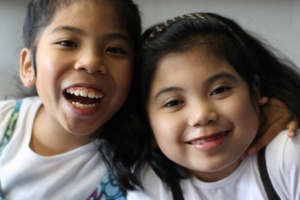 Fundraiser for Propionic Acidemia Foundation (PAF) in memory of Lauren and in honour of Jenna
Fundraiser for Propionic Acidemia Foundation (PAF) in memory of Lauren and in honour of Jenna transitioned to a program called Gateway To Adulthood (GTA). Jenna’s metabolic status has been stable. Cependant, last year when Jenna turned 19 she suddenly had her first seizure. It was a scary time for us as we didn’t understand why she developed epilepsy. It was happening often. With a metabolic crisis, we knew our protocol. Yet, with seizures we had to be alert and constantly in Jenna’s presence, as it could happen at any time.
transitioned to a program called Gateway To Adulthood (GTA). Jenna’s metabolic status has been stable. Cependant, last year when Jenna turned 19 she suddenly had her first seizure. It was a scary time for us as we didn’t understand why she developed epilepsy. It was happening often. With a metabolic crisis, we knew our protocol. Yet, with seizures we had to be alert and constantly in Jenna’s presence, as it could happen at any time.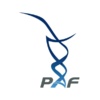







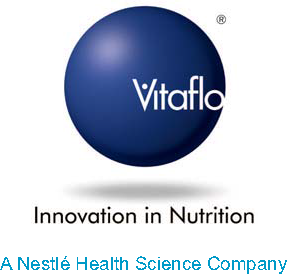



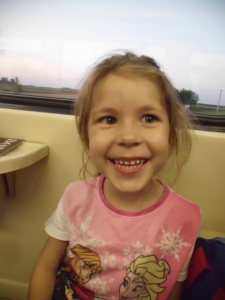
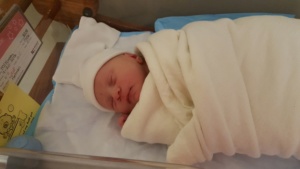
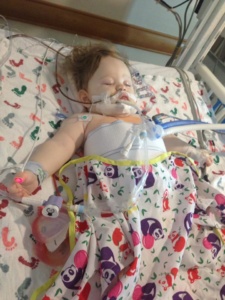 were very fortunate that our first call was “the call” that gave Annabelle her new liver. She went back for surgery around 10:30pm that night and they finished her surgery around 9am that next morning. After surgery Annabelle spent about one week in the PICU. After that week the transplant team moved herto the transplant recovery unit where she stayed until she was discharged. Around two weeks post-transplant Annabelle did encounter a small episode of rejection. Even though “rejection” sounds scary it is very common early on in transplant, and mild cases like Annabelle’s are generally treated with some high-powered IV steroids for a few days. Annabelle was discharged on August 30e and only spent a total of 21 days in the hospital. The transplant/genetics teams in Pittsburgh told us to prepare for complications (as is common with Organic Acidemia patients), but overall Annabelle had very few complications from her transplant surgery for which we are thankful.
were very fortunate that our first call was “the call” that gave Annabelle her new liver. She went back for surgery around 10:30pm that night and they finished her surgery around 9am that next morning. After surgery Annabelle spent about one week in the PICU. After that week the transplant team moved herto the transplant recovery unit where she stayed until she was discharged. Around two weeks post-transplant Annabelle did encounter a small episode of rejection. Even though “rejection” sounds scary it is very common early on in transplant, and mild cases like Annabelle’s are generally treated with some high-powered IV steroids for a few days. Annabelle was discharged on August 30e and only spent a total of 21 days in the hospital. The transplant/genetics teams in Pittsburgh told us to prepare for complications (as is common with Organic Acidemia patients), but overall Annabelle had very few complications from her transplant surgery for which we are thankful.